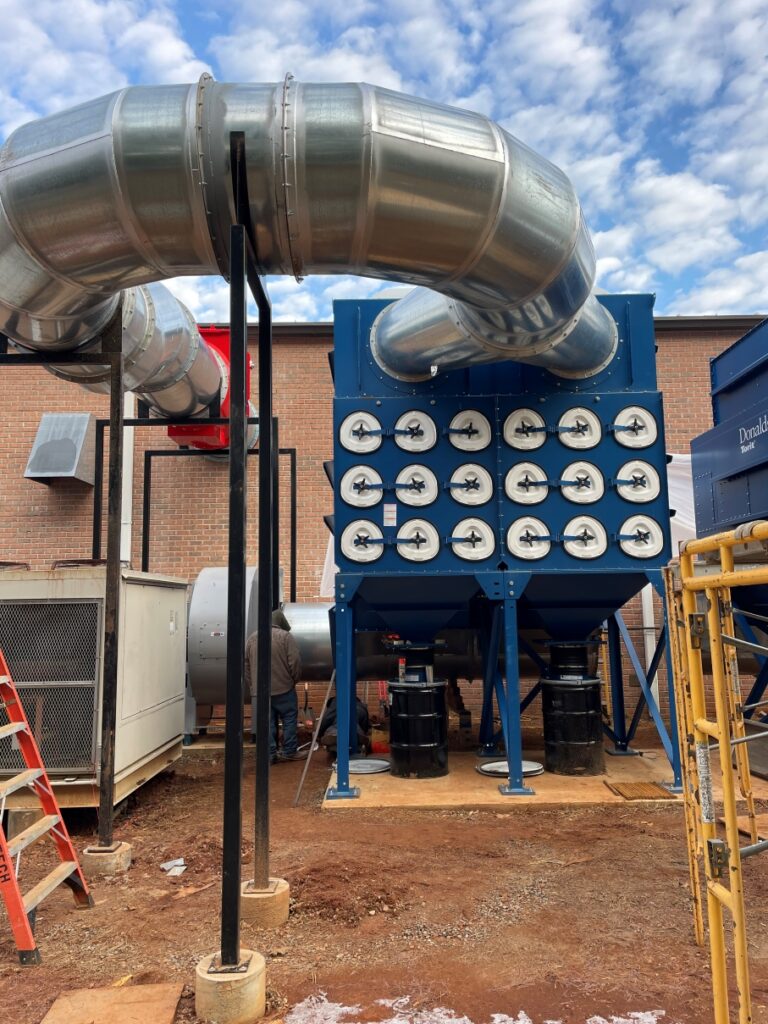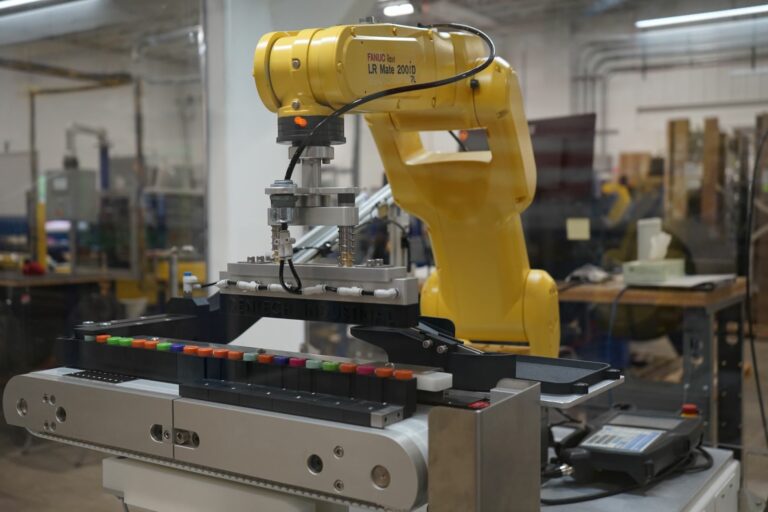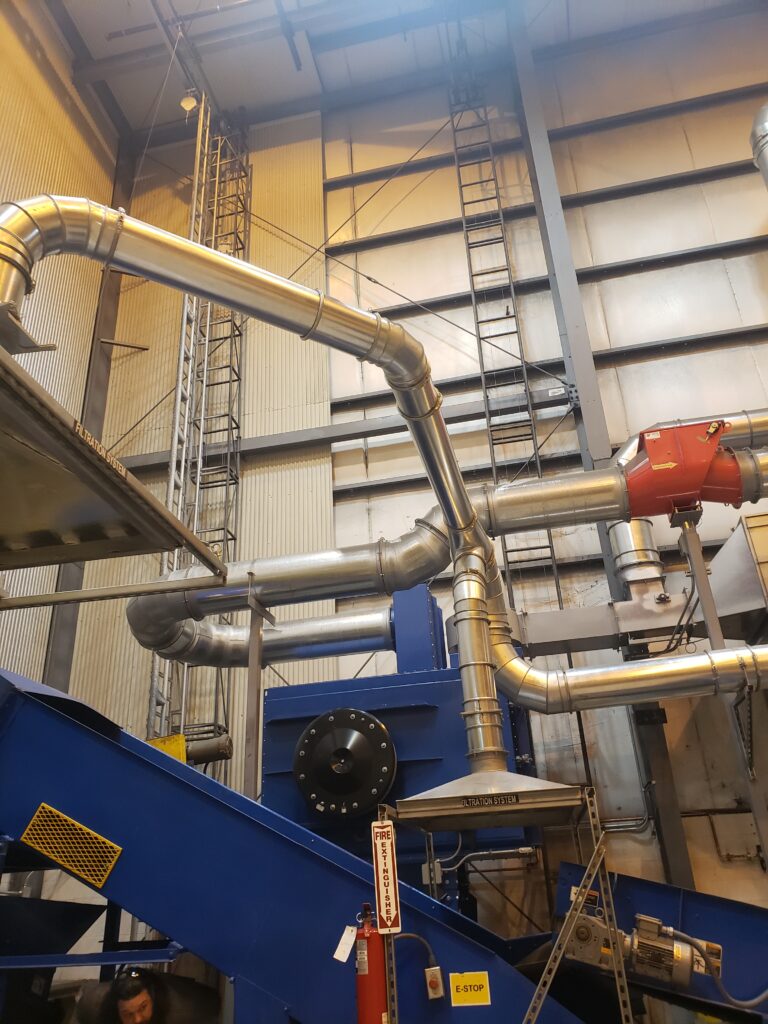When manufactured products are completed, they typically need to be palletized for shipping. If the process is not automated, then employees manually stack the product onto pallets. This work takes a lot of time and effort to consistently load pallets. With an automated solution, palletizing enhances safety, improves productivity, and reduces errors.
Two main types of automated palletizers are conventional and robotic.
A conventional palletizer aligns containers in rows by pushing them against a stopping point. A complete row moves on to a layering table and then on to a pallet.
Robotic palletizers can perform various tasks. They can be used in processes with multiple types of SKUs and pallet designs. Usually, a robotic arm picks up product from a conveyor and places it in layers on a pallet. Robotic palletizers typically take up less space compared to conventional palletizers.
Benefits of automated palletizing processes
Enhanced safety
Automated palletizers complete tasks that may cause harm to people, like repetitive movements, heavy lifting, or handling hazardous materials.
Safety features like immediate contact stops and push button restart maintain a safe work area for both employees and robots.
Check out the simulation below to see an example of a collaborative robot working alongside an operator.
Automated palletizers improve employee safety in the workplace and the company has fewer workmen’s compensations claims.
Improved productivity
Sometimes the palletizing part of a process becomes a bottleneck because manually stacking pallets correctly takes time. But automated palletizing packs at speeds that are faster than manual labor. With the right automation solution, palletizing can go at the same speed as the production line.
Reduced errors
When pallets are manually stacked, they may be inconsistent and break down during shipping. This could cause damage to products, and then additional work is needed to replace the product or refund customers. With an automated palletizing process, pallets are stacked consistently, so chances of pallets breaking down during transportation are reduced.
Automated palletizing solutions offer several benefits including enhanced safety, improved productivity, and reduced errors. These benefits lead to a safer workplace for employees and cost savings for companies. To talk about automated palletizing for your facility, contact us.




